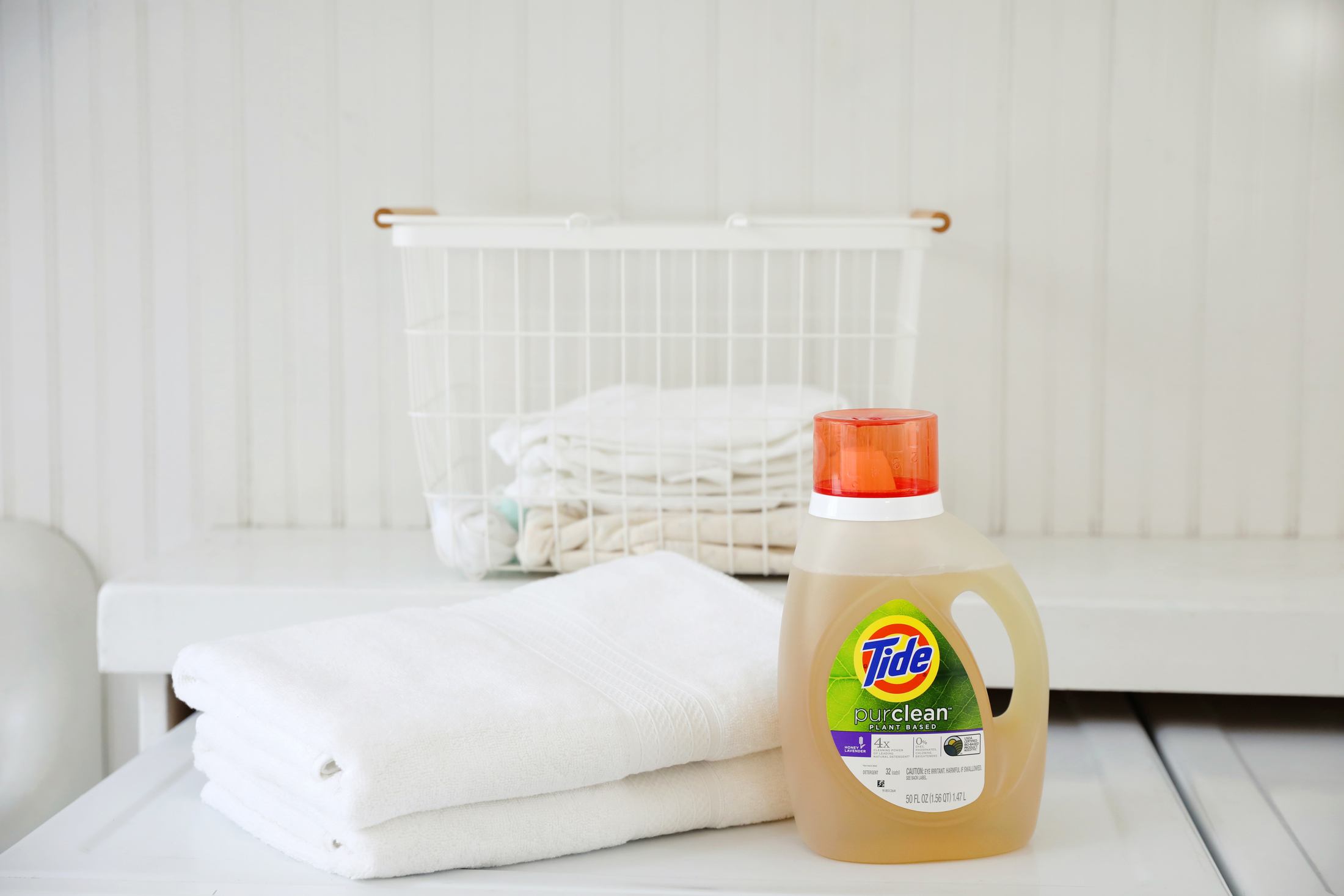3 Simple Tips for Making Laundry Day More Eco-Friendly
That fear is actually based on a total myth. *Cue shocked gasps.* Yup, you can absolutely turn laundry day into a more eco-friendly affair, while still getting that so fresh, so clean feel you're after by adopting a couple, minor tweaks to your laundry routine.
To get the scoop on how, we asked laundry expert Laura Goodman, senior scientist for Procter & Gamble Fabric Care, to share her recommendations for combining your desire for clean clothes (I mean, no one wants to smell) with living a more sustainable, plant-based life.
The myth: Using a plant-based detergent means you have to accept a lower level of clean.
The obvious first step is switching to an eco-friendly detergent, preferably one that works just as well as the traditional stuff, like Tide purclean™—which is made from 75 percent plant-based ingredients and manufactured using 100 percent renewable power electricity.
"Some people believe that in order to use a plant-based product, they need to accept a lower level of clean," Goodman says. "No matter why people switch [to plant-based detergent], we think it’s important that they have access to the same kind of cleaning performance they get with a traditional detergent."
Keep reading for 3 things to know when washing your clothes with an eco-friendly laundry detergent.

Cold water > hot water
Wash away those old beliefs that everything must go in warm water, and try out a cooler temp the next time laundry day rolls around. According to Goodman, heating the wash water is the biggest driver of energy consumption when you're throwing in that post-workout load. Looks like your twice-a-week cycling classes are starting to add up (and not just on those toned calves).
Some plant-based detergents need the extra cleaning help from warm water, which is why Tide purclean™ is the real MVP for actually being designed to work well in cold water. "We’ve designed Tide purclean™ to work in all machines (including high efficiency), and to clean in cold water, so people can save on their energy bills and lighten their environmental footprints," Goodman says.
Don't overdo it
"Using the correct amount of detergent for your load is key," Goodman says. "Base this on factors such as load size, how soiled clothing is, and the recommended dosage found on product packaging." In real terms, don't just pour in half the bottle just because it has a plant-based label on it.
On the flip side, make sure you're using a detergent that can get your clothes clean the first time around—because the benefits of using an eco-friendly detergent are pretty much moot if you end up having to do twice as much laundry (which means twice as much water, energy, etc).
"In conversations with people all over the country, we’ve learned that when clothes don’t get clean, it can lead to rewashing, washing in hot water, or throwing clothes away," Goodman adds. All of which are no-nos for looking out for the planet (and your matcha allowance).
In a rush? Go the quick and cold route
When are you not in a rush is the real question. But if you happened to spill coffee on the blouse that you planned on wearing to happy hour later, then you're going to have to do a laundry room drive-by.
Goodman suggests switching to the Quick and Cold mode for these situations. "If you’re in a hurry, use the Quick and Cold cycle on your washer to save time, energy, and money" she says. Who knew you could help save the planet while knocking out your chores?
In partnership with Tide purclean™
Top photo: Getty Images/PeopleImages
Loading More Posts...